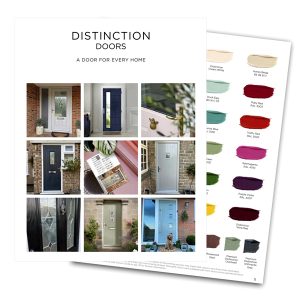Is a Composite Door Better Than uPVC?
When considering a new door for your home, two popular options stand out: composite doors and uPVC doors. Both types have their own set of advantages and drawbacks, which can make the decision challenging. This article will delve into the key aspects of both door types to help you determine which one might be better suited to your needs.
What is a Composite Door?
Composite doors are constructed using a variety of materials, typically including a solid timber core, glass-reinforced plastic (GRP), uPVC, and insulating foam. This combination of materials is designed to leverage the strengths of each component, resulting in a door that offers superior performance in several areas.
What is a uPVC Door?
uPVC (unplasticised polyvinyl chloride) doors are made from a rigid and durable form of plastic. They have been a popular choice for many years, especially in the UK, due to their affordability, low maintenance requirements, and good insulation properties.
Durability and Security
Composite Doors: Door composite are renowned for their durability and security. The solid timber core and GRP skin provide excellent resistance to impact and forced entry. Additionally, these doors often come with multi-point locking systems, enhancing their security features.
uPVC Doors: While uPVC doors are also durable and can offer a reasonable level of security, they are generally not as robust as composite doors. Over time, uPVC can become brittle, particularly in extreme weather conditions, which can compromise its security.
Winner: Composite doors have a clear edge in terms of durability and security due to their solid construction and robust materials.
Insulation and Energy Efficiency
Composite Doors: The multi-layered structure of composite doors, including insulating foam, makes them highly energy efficient. They provide excellent thermal insulation, helping to keep your home warm in the winter and cool in the summer, which can lead to lower energy bills.
uPVC Doors: uPVC doors also offer good insulation properties, although they may not be as effective as composite doors. The air-filled chambers within the uPVC frame do provide some insulation, but the overall thermal efficiency is typically lower compared to composite doors.
Winner: Composite doors are generally better at insulating your home, making them the superior choice for energy efficiency.
Aesthetics and Design Options
Composite Doors: One of the major advantages of composite doors is their aesthetic versatility. They are available in a wide range of styles, colours, and finishes, including woodgrain effects that mimic the appearance of real wood. This allows homeowners to choose a door that perfectly complements the look of their property. You can check out our composite doors images here.
uPVC Doors: uPVC doors also come in various styles and colours, but the range is usually more limited compared to composite doors. The finish of uPVC doors can sometimes look less premium, particularly in comparison to the realistic wood finishes available with composite doors.
Winner: Composite doors offer greater design flexibility and more premium aesthetic options.
Maintenance and Longevity
Composite Doors: Composite doors are low maintenance and highly durable. The GRP outer skin is resistant to weathering and does not require painting or varnishing. They are also resistant to dents and scratches, ensuring they maintain their appearance over time.
uPVC Doors: uPVC doors are also low maintenance and do not require painting. However, they can be prone to discolouration and fading over time, especially when exposed to direct sunlight. Additionally, uPVC can be susceptible to minor damage from impacts.
Winner: Composite doors are more resilient and maintain their appearance better over time, making them the superior option for maintenance and longevity.
Cost Considerations
Composite Doors: The high-quality materials and construction of composite back doors typically make them more expensive than uPVC doors. However, their superior durability, insulation, and aesthetic appeal can justify the higher upfront cost, providing better long-term value.
uPVC Doors: uPVC doors are generally more affordable and can be a cost-effective option for homeowners on a tighter budget. They offer good performance for their price, but may not match the longevity and aesthetic quality of composite doors.
Winner: For those prioritising initial cost, uPVC doors may be more appealing. However, composite doors offer better long-term value.
Environmental Impact
Composite Doors: Composite doors often have a lower environmental impact due to their longevity and energy efficiency, which can help reduce a home’s carbon footprint over time. However, the manufacturing process can be more energy-intensive.
uPVC Doors: uPVC doors are made from plastic, which raises concerns about environmental sustainability. While uPVC is recyclable, the production and disposal of plastic products can have significant environmental impacts.
Winner: Composite front doors generally have a lower environmental impact when considering long-term use and energy efficiency.
Conclusion
Choosing between a composite door and a uPVC new front door depends on your specific needs and priorities. Composite doors offer superior durability, security, energy efficiency, and aesthetic appeal, making them an excellent long-term investment despite their higher initial cost. On the other hand, uPVC doors are a more affordable option that still provides good performance and low maintenance.
Ultimately, the best choice for you will depend on your budget, design preferences, and the importance of factors such as security and energy efficiency. By carefully considering these aspects, you can select the door that best meets your needs and enhances the comfort and value of your home.

